Upregulated Heat Shock Proteins After Hyperthermic Chemotherapy Point to Induced Cell Survival Mechanisms in Affected Tumor Cells From Peritoneal Carcinomatosis
- PMID: 29403306
- PMCID: PMC5791678
- DOI: 10.1177/1179064417730559
Upregulated Heat Shock Proteins After Hyperthermic Chemotherapy Point to Induced Cell Survival Mechanisms in Affected Tumor Cells From Peritoneal Carcinomatosis
Abstract
In patients with peritoneal carcinomatosis cytoreductive surgery combined with hyperthermic intraperitoneal chemotherapy (HIPEC) represents a promising treatment strategy. Here, we studied the role of hyperthermic chemotherapy on heat shock protein (HSP) expression and induction of tumor cell death and survival. HSP27, HSP70, and HSP90 combined with effects on tumor cell proliferation and chemosensitivity were analyzed in human colon cancer. Hyperthermic chemotherapy resulted in significant HSP27/HSP70 and HSP90 gene/protein overexpression in analyzed HT-29/SW480/SW620 colon cancer cells and peritoneal metastases from patients displaying amplified expression of proliferation markers, proliferating cell nuclear antigen and antiapoptotic protein Bcl-xL. Moreover, functionally increased chemoresistance against 5-fluorouracil/mitomycin C and oxaliplatin after hyperthermic chemotherapy points to induced survival mechanisms in cancer cells. In conclusion, the results indicate that intracellular HSP-associated antiapoptotic and proliferative effects after hyperthermic chemotherapy negatively influence beneficial effects of hyperthermic chemotherapy-induced cell death. Therefore, blocking HSPs could be a promising strategy to further improve the rate of tumor cell death and outcome of patients undergoing HIPEC therapy.
Keywords: Heat shock proteins; apoptosis; chemoresistance; hyperthermia; hyperthermic intraperitoneal chemotherapy; peritoneal carcinomatosis.
Conflict of interest statement
Declaration of conflicting interests:The author(s) declared no potential conflicts of interest with respect to the research, authorship, and/or publication of this article.
Figures
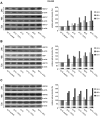
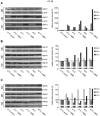
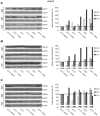

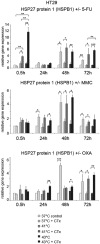
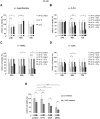
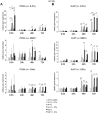

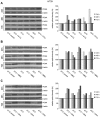
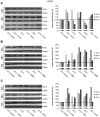

Similar articles
-
Metal-enriched HSP90 nanoinhibitor overcomes heat resistance in hyperthermic intraperitoneal chemotherapy used for peritoneal metastases.Mol Cancer. 2023 Jun 14;22(1):95. doi: 10.1186/s12943-023-01790-2. Mol Cancer. 2023. PMID: 37316830 Free PMC article.
-
Hyperthermic intraperitoneal chemotherapy in patients with peritoneal carcinomatosis: role of heat shock proteins and dissecting effects of hyperthermia.Ann Surg Oncol. 2013 Apr;20(4):1105-13. doi: 10.1245/s10434-012-2784-6. Epub 2013 Mar 2. Ann Surg Oncol. 2013. PMID: 23456378
-
Treatment of Peritoneal Dissemination in Stomach Cancer Patients With Cytoreductive Surgery and Hyperthermic Intraperitoneal Chemotherapy (HIPEC): Rationale and Design of the PERISCOPE Study.JMIR Res Protoc. 2017 Jul 13;6(7):e136. doi: 10.2196/resprot.7790. JMIR Res Protoc. 2017. PMID: 28705789 Free PMC article.
-
Rationale for hyperthermic intraperitoneal chemotherapy (HIPEC) in the treatment or prevention of peritoneal carcinomatosis.Acta Chir Belg. 2004 Aug;104(4):377-83. Acta Chir Belg. 2004. PMID: 15469146 Review.
-
Current status of cytoreductive surgery with hyperthermic intraperitoneal chemotherapy in patients with peritoneal carcinomatosis from colorectal cancer.Clin Colorectal Cancer. 2012 Sep;11(3):167-76. doi: 10.1016/j.clcc.2012.01.001. Epub 2012 Mar 6. Clin Colorectal Cancer. 2012. PMID: 22397952 Review.
Cited by
-
The Role of Intraperitoneal Intraoperative Chemotherapy with Paclitaxel in the Surgical Treatment of Peritoneal Carcinomatosis from Ovarian Cancer-Hyperthermia versus Normothermia: A Randomized Controlled Trial.J Clin Med. 2022 Sep 29;11(19):5785. doi: 10.3390/jcm11195785. J Clin Med. 2022. PMID: 36233653 Free PMC article.
-
Increased temperature-related adeno-associated virus vectors transduction of ovarian cancer cells - essential signatures of AAV receptor and heat shock proteins.Exp Ther Med. 2019 Dec;18(6):4718-4732. doi: 10.3892/etm.2019.8112. Epub 2019 Oct 21. Exp Ther Med. 2019. PMID: 31772643 Free PMC article.
-
Combination Treatment with Liposomal Doxorubicin and Inductive Moderate Hyperthermia for Sarcoma Saos-2 Cells.Pharmaceuticals (Basel). 2024 Jan 19;17(1):133. doi: 10.3390/ph17010133. Pharmaceuticals (Basel). 2024. PMID: 38276006 Free PMC article.
-
Hyperthermic Intraperitoneal Chemotherapy: A Critical Review.Cancers (Basel). 2021 Jun 22;13(13):3114. doi: 10.3390/cancers13133114. Cancers (Basel). 2021. PMID: 34206563 Free PMC article. Review.
-
Metal-enriched HSP90 nanoinhibitor overcomes heat resistance in hyperthermic intraperitoneal chemotherapy used for peritoneal metastases.Mol Cancer. 2023 Jun 14;22(1):95. doi: 10.1186/s12943-023-01790-2. Mol Cancer. 2023. PMID: 37316830 Free PMC article.
References
-
- Elias D, Lefevre JH, Chevalier J, et al. Complete cytoreductive surgery plus intraperitoneal chemohyperthermia with oxaliplatin for peritoneal carcinomatosis of colorectal origin. J Clin Oncol. 2009;27:681–685. - PubMed
-
- Sugarbaker PH, Yonemura Y. Clinical pathway for the management of resectable gastric cancer with peritoneal seeding: best palliation with a ray of hope for cure. Oncology. 2000;58:96–107. - PubMed
-
- Spiliotis JD. Peritoneal carcinomatosis cytoreductive surgery and HIPEC: a ray of hope for cure. Hepatogastroenterology. 2010;57:1173–1177. - PubMed
LinkOut - more resources
Full Text Sources
Other Literature Sources
Research Materials
Miscellaneous

